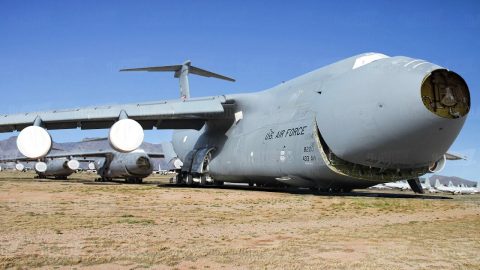
YouTube / Fluctus
Although it’s relatively hard for us to survive under these conditions, planes actually get numerous advantages when stored in the desert. The low humidity, infrequent rains, hard alkaline soil, and high altitudes work well to preserve these aircraft naturally.
Every aircraft sent to the boneyard gets its proper send-off via a retirement ceremony organized at various airports – a fitting end to their long service.
The crew sprays the aircraft with “Spraylat” or sprayable latex at 10 am, any later and the latex wouldn’t be able to stick. This is done to block the intrusion of moisture and prevent more degradation.
Most fighter aircraft need about 50 hours to be prepared for storage. Meanwhile, helicopters need 80, and massive planes like B-52s need around 300 hours.
Trainees also use the boneyard to gain practical experience. Air personnel from around the world visit the boneyard to learn more about the approaches to the plane’s operational recovery mechanisms.